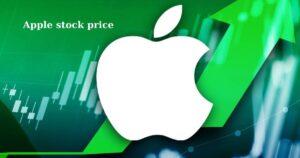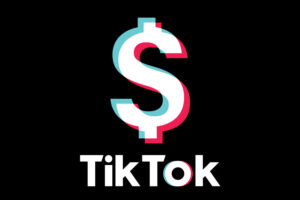YouTube is the world’s largest video-sharing platform, attracting billions of users every day. Initially founded as an independent entity in 2005, YouTube was acquired by Google just a year later for $1.65 billion. This acquisition integrated YouTube into Google’s technology ecosystem, making it a key part of the company’s digital landscape.
1. Who is the owner of YouTube?
In October 2006, Google acquired YouTube for $1.65 billion, a deal that significantly boosted the platform’s growth. Since then, YouTube has evolved from a simple ad-supported business model to offering premium subscription services such as YouTube Premium, which provides an ad-free experience and access to exclusive content.
Under Google’s management, YouTube has expanded far beyond a traditional video-sharing website. It is now available on multiple platforms, including mobile apps, smart TVs, entertainment devices, and various streaming services. YouTube’s diverse content includes:
- Music videos, movies, vlogs, and news
- Educational content, documentaries, and reports
- Livestreams, movie trailers, and exclusive content
Alongside independent content creators (YouTubers), major media corporations such as Disney, Paramount, NBCUniversal, and Warner Bros. Discovery also contribute to and distribute content on YouTube. This has cemented YouTube’s status as one of the most powerful media platforms in the world.

👉 Learn more about YouTube TV here!
2. Google LLC
Google was founded in 1998 by Larry Page and Sergey Brin at Stanford University. Initially launched as a search engine, Google rapidly expanded into a multi-sector technology conglomerate. The company went public in 2004 through an initial public offering (IPO) and underwent a corporate restructuring in 2015, becoming a subsidiary of Alphabet Inc.
Today, Google provides a wide range of essential products, including Gmail, Google Drive, Chrome, Android, and Google Cloud, while also leading advancements in artificial intelligence. Under the leadership of CEO Sundar Pichai, Google continues to expand and maintain its position as one of the world’s most valuable technology companies.
3. The owner of Google LLC
Google LLC is currently owned by Alphabet Inc., the parent company established in 2015 to restructure Google’s various business segments. Three key figures have played a crucial role in Google’s growth: Larry Page, Sergey Brin, and Sundar Pichai. Larry Page and Sergey Brin are the co-founders of Google, while Sundar Pichai serves as the CEO of Alphabet Inc.

In addition, Google has attracted significant investment from leading global financial institutions. Major shareholders of Google include Vanguard Group Inc., BlackRock Inc. (BLK), T. Rowe Price Associates Inc., and FMR LLC. These organizations not only hold substantial shares in the company but also have a strong influence on Google’s strategic direction.
4. Google acquired YouTube
On October 9, 2006, Google officially announced its acquisition of YouTube for $1.65 billion in stock. The deal was finalized on November 13 of the same year, marking one of the most significant tech acquisitions of that time.
Bringing YouTube under Google’s umbrella not only enabled the platform to scale rapidly but also reshaped the entire landscape of digital media. In the following years, YouTube experienced exponential growth, giving rise to a new generation of influential YouTubers and pioneering a content monetization model that had never existed before.
By 2018, YouTube’s revenue reached approximately $15 billion, more than double that of NBC ($7 billion), solidifying its dominance in the digital media industry. The platform not only competed with traditional television networks but also surpassed many long-established media organizations.

Before its acquisition by Google, YouTube faced numerous copyright infringement allegations due to user-uploaded unauthorized content. To address this, YouTube proactively signed multiple agreements with media companies, ensuring fair rights and benefits for all stakeholders.
Following the acquisition, YouTube continued to operate as an independent business with 68 employees, including its co-founders, who remained under Google’s leadership. In its early years, the platform’s growth was driven by viral videos such as Evolution of Dance, David After the Dentist, and various humorous and entertaining content.
On February 7, 2007, Google released its first financial report on YouTube, highlighting the platform’s rapid growth. Notably, co-founders Chad Hurley and Steve Chen earned $395 million and $326 million, respectively, from the deal.
5. Google’s impressive stock price performance
Google went public on August 19, 2004, with an initial share price of $85, raising $1.67 billion and valuing the company at $23 billion. Fueled by the surge in online advertising, its stock price skyrocketed to $350 by October 2007.
Google classifies its shares into two categories on NASDAQ: GOOGL (with voting rights) and GOOG (without voting rights). Since Q4 2015, Alphabet Inc. has been the parent company managing both stock types.
>>Read more: GOOGL and GOOG here!
The shift from traditional advertising to digital advertising significantly accelerated Google’s growth. In 2005, the company’s profits surged by 700%, and by 2006, advertising revenue reached $10.49 billion, accounting for nearly all of its total revenue. By 2011, advertising contributed 96% of Google’s total revenue.

In 2012, Google’s annual revenue surpassed $50 billion for the first time, a significant jump from $38 billion the previous year. Former CEO Larry Page described this milestone as a remarkable achievement for a company just 15 years old. By Q3 2013, Google’s revenue hit $14.89 billion, with $10.8 billion coming from online advertising. By January 2014, Google’s market capitalization had reached $397 billion, further cementing its leadership in the tech industry.
Under Google’s management, YouTube continued to expand beyond a simple video-sharing platform into a diverse content ecosystem. Through a combination of advertising and subscription-based services, YouTube reinforced its dominance in digital media. This acquisition not only strengthened Google’s position but also revolutionized the way the world consumes and engages with video content.















